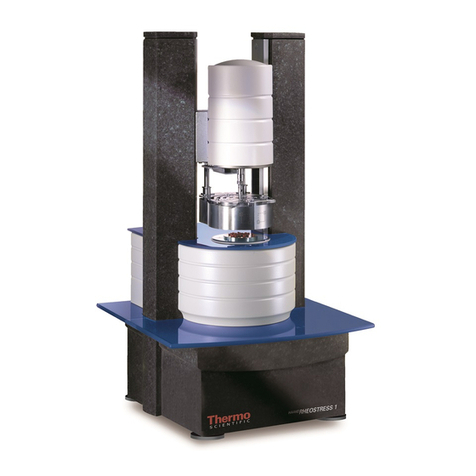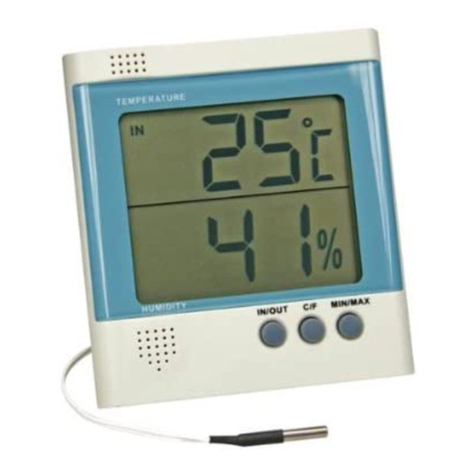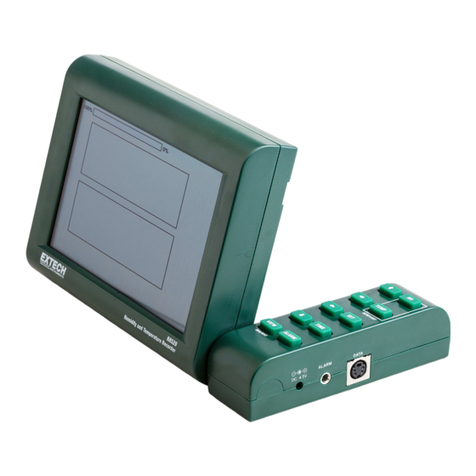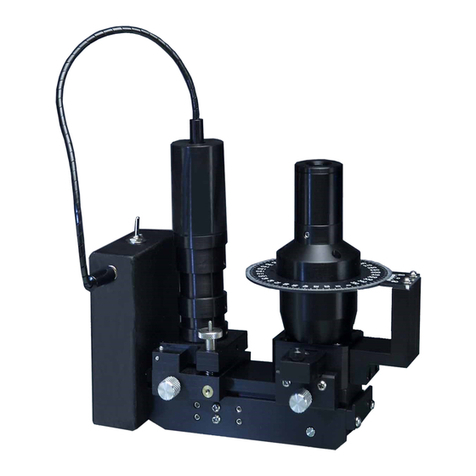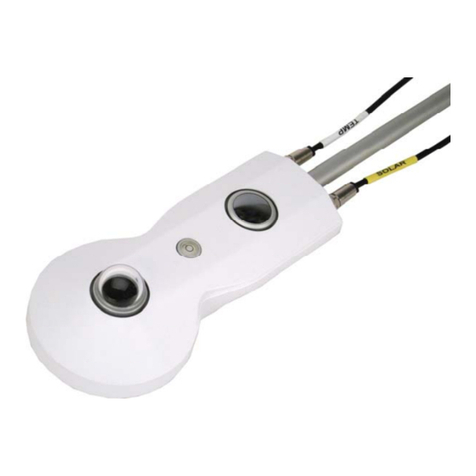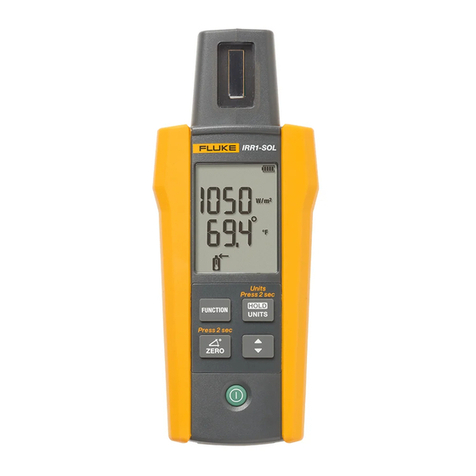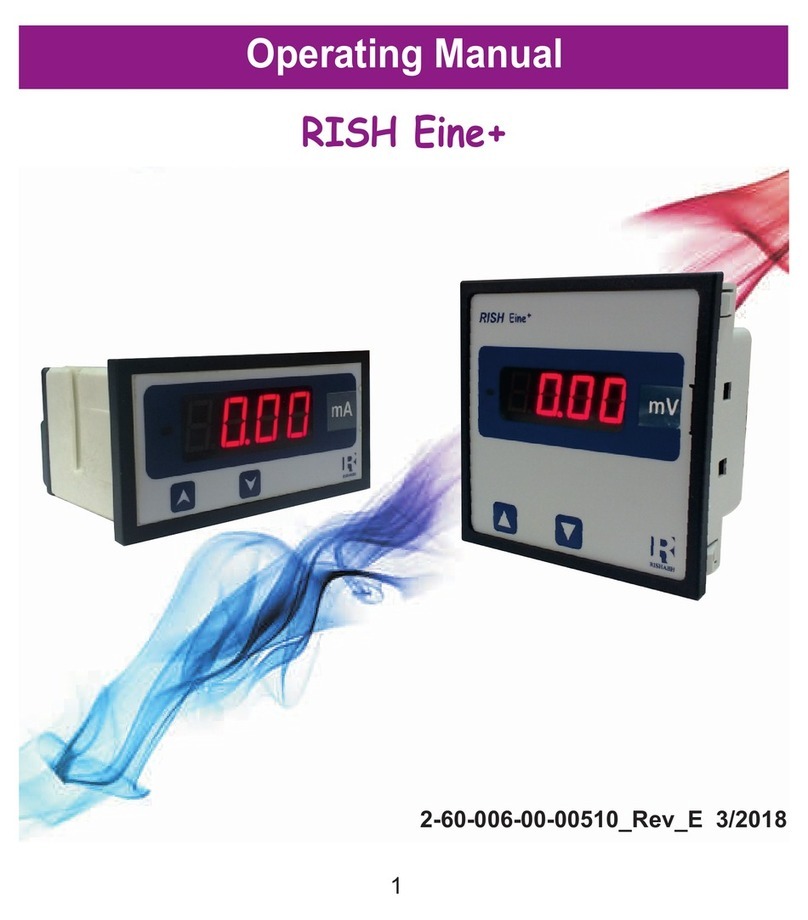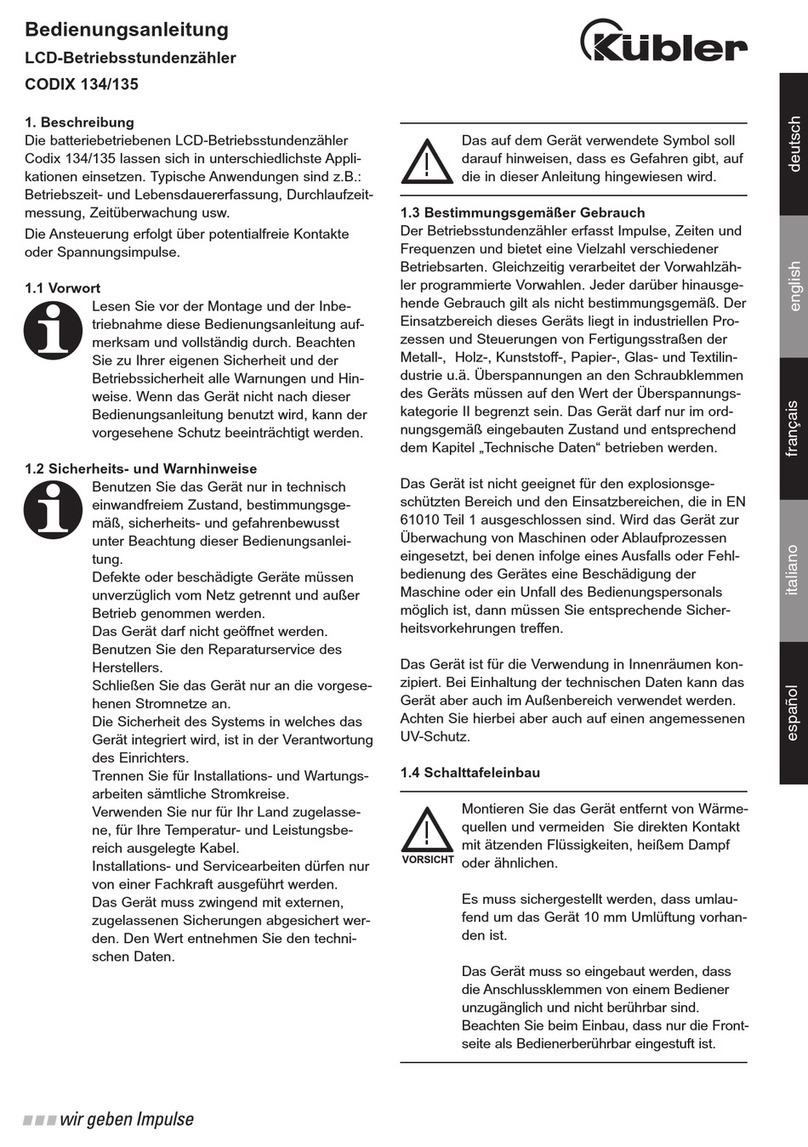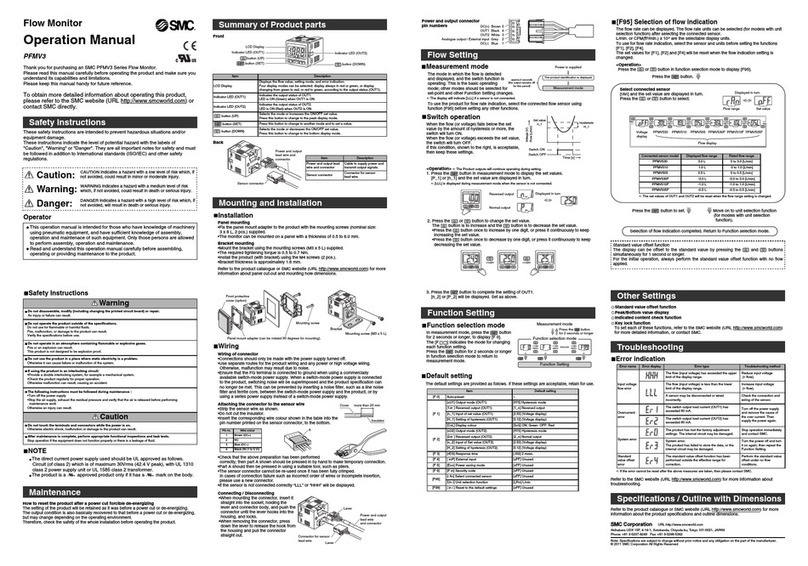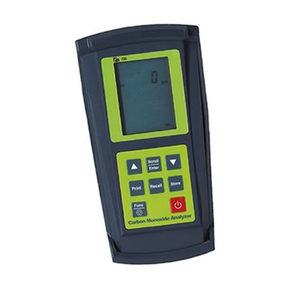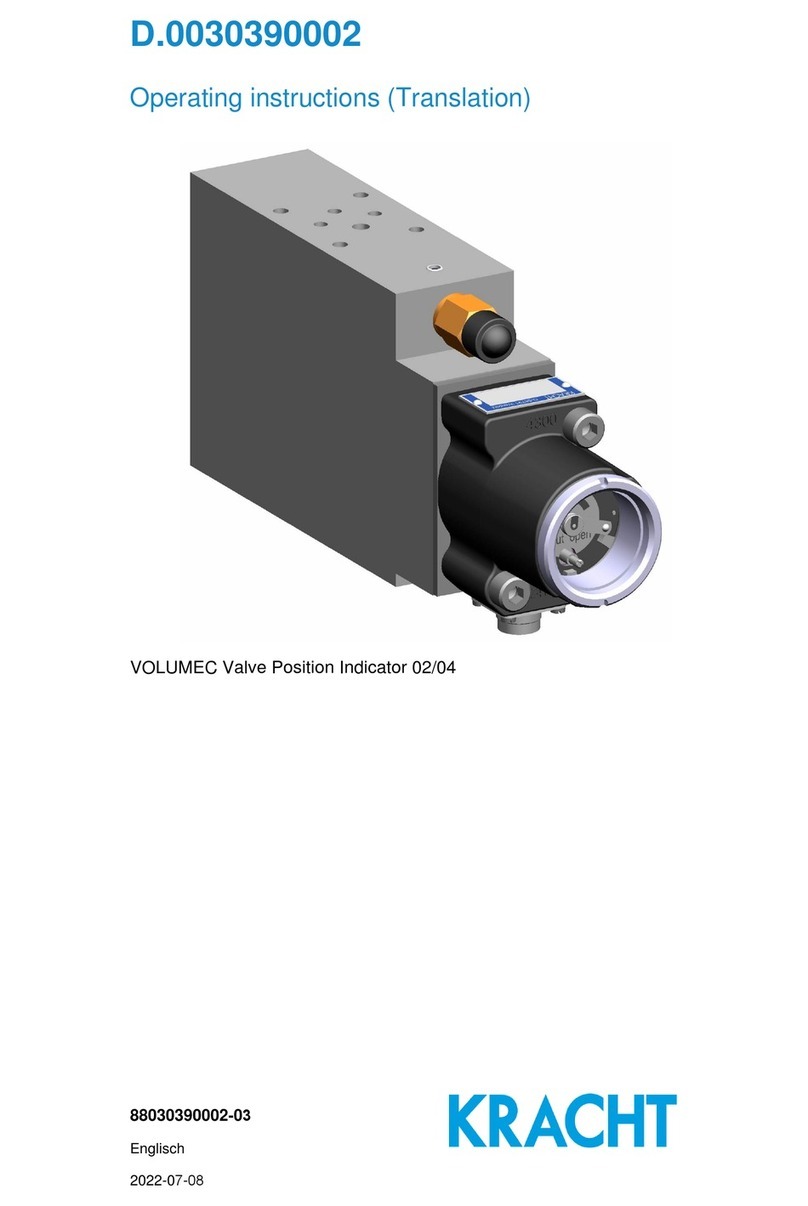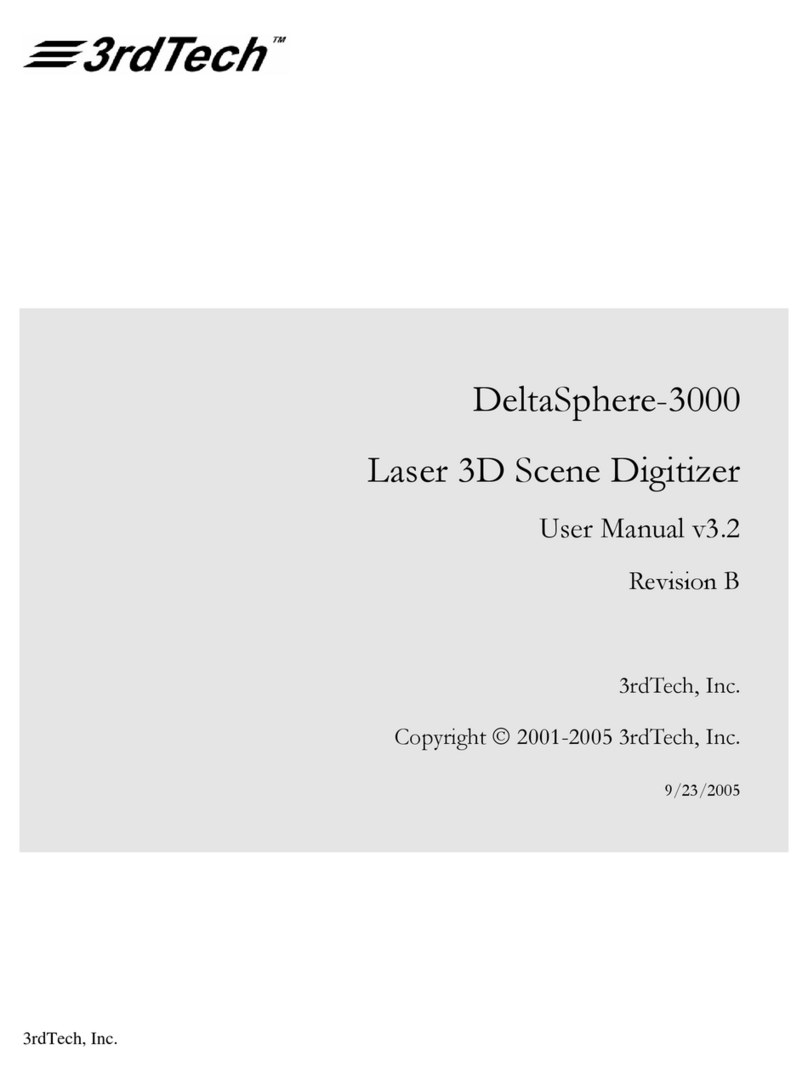
PS-100-SF (Tardy) Quick-Start Guide, Continued
3. Using a felt-tip pen, mark the area around the point of interest (POI) on the sample. Position the
sample in the correct orientation for measurement as follows:
a. Identify the direction of the principal stress being measured. If unknown, refer to the PS-100-SF
instruction manual to determine direction, or use the SENARMONT method of analyzer rotation
instead.
b. Position the sample with the direction of principal stress being measured parallel to the
analyzer-polarizer axes (45º to the reference mark of the polarimeter),
c. Follow the instructions for analyzer rotation below and repeat above steps for each POI and
direction desired.
4. If there is stress present in the sample, it will be seen through the analyzer as varying shapes and
colors (fringes). The shape and color of the fringes indicate the distribution and magnitude of the
stresses. (Very low stresses will appear white or gray.) Identify the LOWER fringe order (n) closest to
the POI using the following table. For example, if gray is the color at the POI, then n = 0. Likewise, if
bright yellow, n = 0. If the color at the POI is blue, then n = 1. Write this value down.n = ___
Color at POI Fringe
Order
Black 0
-Gray
-White->Yellow
-Bright Yellow
-Orange (dark yellow)
-Red
Indigo->Violet 1
-Blue
-Blue->Green
-Green->Yellow
-Yellow
-Orange (dark yellow)
-Red
Indigo->Violet 2
-Green
-Green->Yellow
-Pink
Violet 3
-Green
5. From Step 4, note the HIGHER fringe order closest to the POI. This would be n+1. For example,
if the lower fringe order (n) is 0, then the higher fringe order would equal 1.
6. While observing the movement of the fringes in the sample, rotate the Analyzer CLOCKWISE until
a fringe is centered on the POI. Read the fractional fringe order (f) from the Analyzer
Scale. This value will be between 0.0 and 1.0. Write this value down. f = ___
7. If you observed in Step 6 that a LOWER order fringe (see table) has moved TOWARD the POI,
calculate the fringe order (N) at the POI using the values from Step 4 and Step 6 in this relation:
N = n+f Write this value down. The stress measured at the POI is in tension (+).
8. If you observed in Step 6 that a HIGHER order fringe (see table) has moved TOWARD the POI,
calculate the fringe order (N) at the POI using the values from Step 4 and Step 6 in this relation:
N = (n+1)-f Write this value down. The stress measured at the POI is in compression (-).
9. To calculate the measured stress in MPa , use the following relation:
Where:
S = Stress (MPa) Note: Multiply by 145 to arrive at PSI.
N = Fringe order at POI
λ= Wavelength (565 nm for glass; 570 nm for plastic)
T = Thickness of material at POI, in mm
CB= Material constant, Brewsters (2.65 for soda-lime glass)
R = Retardation (nm)
Strainoptics, Inc. 108 West Montgomery Ave. ٠North Wales, PA 19454 ٠Tel: (215) 661-0100 ٠Fax: (215) 699-7028
Decreasing Intensity =
Higher Stress
N * λ
T * CBR
T * CB
=


